Author Archives: jerseyshore
PRP Offers Non-Surgical Sports Injury Treatment
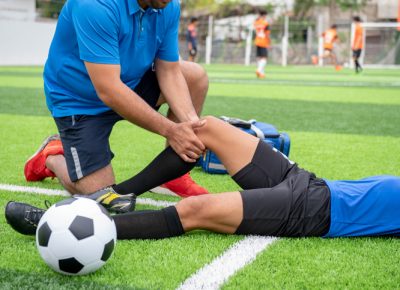
PRP Injections offer a non-surgical sports injury treatment and an alternative to corticosteroid injections. Chronic pain is an issue many people deal with daily, and it can have several different causes. For people that are physically active, sports are a common source of injury. For golfers and racquet sports participants, they even have their own injuries, golfer’s and tennis elbow!
Traditionally, these types of injuries are treated with oral medications (ibuprofen, naproxen, etc), physical therapy and corticosteroid injections. However, for common injuries such as tennis elbow, partial rotator cuff tears, Achilles tendinitis and plantar fasciitis, these treatments often times don’t completely resolve the pain. At that point, many patients are told their only option remaining is surgery.
Surgery as a treatment option provides the potential for complete recovery, but it also carries several significant risks and extended periods of down time, affecting work and exercise routines.
Over the years, several treatments have been developed to help the body regenerate healthy tissue to heal the chronic injuries without surgery. One of these regenerative treatments is platelet rich plasma injection (PRP).
PRP non-surgical sports injury treatments
PRP has been around for a long time. But it became better known in the sports community in 2006 when Hines Ward of the Pittsburgh Steelers had PRP after injuring his knee in the AFC Championship game and went on to win Super Bowl MVP. It moved into the mainstream as well known athletes such as Kobe Bryant traveled to Germany to have a similar treatment done.
PRP is a procedure in which the patient’s blood is drawn and spun down in a centrifuge, concentrating the platelets. That platelet rich plasma is then injected into and around the damaged tissue. Platelets have granules of growth factors inside of them. These are the way the body identifies injuries and are the building blocks used to heal the injury. By injecting them into the site of damage, they trick the body into thinking the chronic injury is new, and it restarts a new wave of healing.
What are the Benefits of PRP?
- There are no side effects to the treatment
- There is no increased risk of infection compared to other injections since we are using the patient’s own blood
- There is brief down time after the procedure so there is no concern for extended time out of work
- Athletes can continue to stay active during the healing process
Anyone with an injury that includes chronic damage to a tendon or ligament is potentially a candidate for PRP a non-surgical sports injury treatment. Some examples of injuries that we have successfully treated with PRP include partial rotator cuff tears, tennis and golfer’s elbow, chronic trochanteric bursitis, chronic MCL sprains in the knee, Achilles tendinitis and plantar fasciitis.
For a consultation, contact us at 609-904-2565.
Helpful Tips to Avoid Golf Injuries and Enjoy Your Round
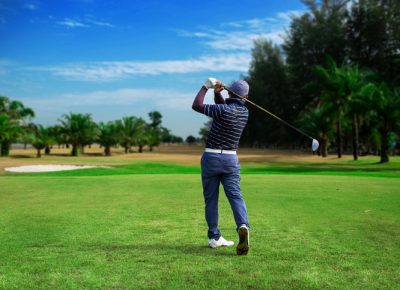
Let’s look at ways to avoid golf injuries as New Jersey courses re-open. With winter and the six-week corona virus-imposed golf hiatus coming to an end, golfers will be grabbing their clubs and hitting the links starting this weekend.
With all that time off, you’re bound to be a little rusty and, even a little out of golf shape. Common injuries that can occur in golf include elbow, shoulder, hip and low back pain. Here are some tips to help you avoid golf injury and to help you get golf ready:
Work on Technique
A strong golf game is based on proper swing technique. Poor swings can put abnormal stress on the muscles of the arms, shoulders, back and hips. Over the course of a round or multiple rounds, this can lead to sprains, strains and overuse injuries like tendinitis. Correcting your form will help prevent these types of injuries.
Training Prevents Golf Injuries
Even with the best technique, your body needs to be able to handle the rigors of a round of golf. Training the necessary muscles throughout your body to perform for 18 holes is essential for staying healthy. Undergoing professional evaluation with tools such as the Functional Movement Screen can identify weaknesses and help develop an appropriate training regimen.
Stretch and Warmup
Studies have shown that the average golfer spends less than 10 minutes warming up. That is not nearly enough time to get both mentally and physically prepared for a round of golf. Get to the course early enough to give yourself the necessary time to go through a proper routine. Your routine should include some light stretching to loosen up the body and time to work through swinging your clubs.
Use Common Sense
Not all golf injuries are musculoskeletal in nature. Be prepared for the environment. Dress appropriately for the weather; make sure to use sunscreen and drink plenty of fluids.
Following these simple tips can help prevent some of the most common injuries golfers suffer.
Think you might have an injury? Dr. Sokalsky can provide an evaluation, accurate diagnosis and treatment plan. This will help prevent chronic injury and get you back on the course quicker.
5 Tips to Stay Active & Injury-Free While Staying Home
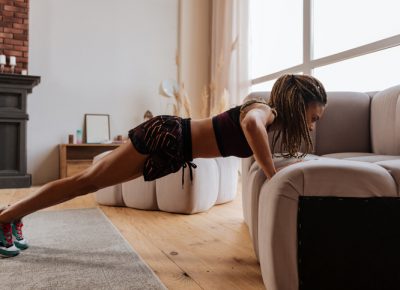
Let’s look at how to stay active during the COVID-19 Crisis. Are you missing your regular work outs at your favorite gym? What about regular runs or walks on a local trail or track? How about that fun dance class with friends?
National experts (American Heart Association) recommend at least 150 minutes of moderate intensity exercise per week to promote a healthy lifestyle. For many of us, we get that exercise in gyms or workout studios. For others, we use parks, tracks and other outdoor facilities to get the recommended amount of exercise in.
Unfortunately, the recent outbreak of the COVID-19 virus has meant that our favorite locations for exercise have temporarily closed. Additionally, we’ve been asked to reduce how much we travel to further reduce the potential spread of the virus.
It is important, now more than ever to stay active as much as we can. And, there are plenty of ways to get a good workout within the confines of our homes.
Here are 5 tips to help you stay active while sheltering in place:
Create a Plan
Before starting to work out, it is important to create a workout schedule to prevent overuse injuries common with exercise. Our equipment and exercise selection options are limited. Without proper planning, certain common exercises can be repeated throughout the week, increasing the risk of conditions such as shoulder bursitis, tennis elbow and Achilles tendinitis.
Remember the Fundamentals
Many of us rely on group classes for our exercise consumption. These classes have instructors or coaches leading us through the various portions of the workout and pointing out proper form for our exercises. Without your coach/instructor, make sure to include 5-10 minutes of warmups and cool downs to help prevent injury. Additionally, working out in front of a mirror can help you catch technique flaws that can also lead to injury.
Be Creative
Novices to the world of exercise can feel overwhelmed when trying to put their own workouts together. Fortunately, there was this marvelous invention called the internet. When in doubt, utilize its vast expanse to search for already designed workouts.
DISCLAIMER: Be sure to select workouts matching your fitness level, skill level, and available equipment (if any).
Modify
Do not hesitate to use other workouts as a base and change the volume of reps, intensity and/or exercises to suit your situation. In addition, items around the house can be used to augment the workout. Canned goods can serve as 1-3-pound weights. Remember from science class that 1 liter of water weighs 2.2 pounds. Filling a larger container with water can provide a larger variety of weights for the workout.
Just Move:
When everything else fails, remember something is better than nothing. Go for a walk around the neighborhood. Every time a commercial comes on, walk up and down your stairs a few times or do 10 sit ups. Bring back out that Fitbit you haven’t worn in a year and start counting your daily steps with the goal of doing more today than you did yesterday.
Regular physical activity not only helps you feel good and look better, it helps to relieve stress. (American Heart Association Stress Relief) There is no doubt this is a stressful and anxious time. So, just keep moving using the tips above, follow the guidelines recommended by the CDC and we will all get through this together.
Stay active and remember to call our office, if you need help with a chronic injury or if you experience pain from doing something sports related. We have incorporated updated policies to keep our patients and staff safe. We’ll determine if it’s something that needs to be treated now or can wait until later.
Young Athlete Concussions: Know the Signs and Next Steps
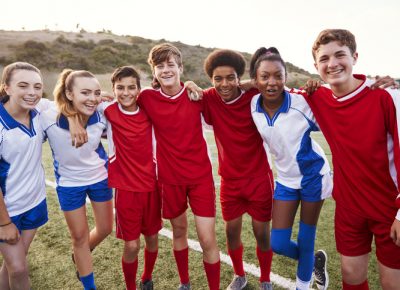
Concussions continue to be a prominent topic in the news. However, a lot of the conversations on TV revolve around athletes in professional and college ranks that have teams of medical professionals surrounding them to help diagnose and treat their injuries. Even at the high school level, there are frequently well-trained athletic trainers to guide the treatment process of injured athletes.
But as the popularity of club sports grows in all age groups, more athletes are competing in settings where there is limited trained medical supervision. Therefore, coaches and parents are usually the first one to evaluate an athlete with a head injury on the field.
If you have a young athlete playing a sport, here are a few key points to remember regarding concussions that are universal to treatment:
- Know the Signs
A concussion is an injury to the brain caused by trauma directly to the head or body that results in the brain being shaken or jolted inside the skull.There are over 20 signs and symptoms for concussion. The most common are headache, dizziness, fogginess and nausea. The athlete may also complain of difficulty concentrating, blurry vision or difficulty remembering the plays.
If any of these symptoms are present, the athlete should be removed from the game and evaluated by a medical professional experienced in treating concussions. Do not allow an athlete with a suspected concussion to return to the game!
- Next Steps
For student athletes, concussions can cause serious difficulties and limitations. They may have difficulty focusing in class, working on computers for extended periods of time, difficulty taking notes from the board and even simply reading.You should remove the athlete from the aggravating tasks until evaluation by a pediatrician, family doctor or concussion specialist is made.
Once evaluated, proper accommodations such as reduced workloads and extra time to complete assignments should be arranged as suggested by your healthcare provider.
- After School Accommodations
Accommodations don’t end at the end of the school day. The same difficulties the student has in school translate to out-of-school activities too. Things such as watching TV, playing video games and extended time on a cell phone can trigger severe symptoms.Parents must supervise children and remove aggravating activities that may slow the healing process. Close follow up with the doctor will help guide parents and school administration as to when it is OK to return to normal activity.
- Return to Play
The final decision on when it is safe to return the athlete to competition will be made by your supervising medical professional.Some landmarks to keep in mind to help guide the decision for final clearance include complete symptom resolution, a return to all schoolwork and testing without accommodations and light exercise without symptoms.
Concussions are a complex injury to diagnose and treat. Fortunately, due to the increased scrutiny in sports and increased focus of research, our ability to understand and treat concussions continues to grow. However, the effects of concussions don’t stop at the sidelines. They affect the student’s performance in school and social life outside of school. Therefore parents, coaches and teachers should be aware of the basic signs of the injury, how to properly evaluate and treat them.
We help to diagnose the sometimes subtle symptoms and guide you through safe and effective concussion recovery. We treat age specific concussions.
Contact us for an evaluation of a middle-school, high-school or college-aged athlete who has experienced a sports-related injury and who might suffer from a concussion.
Golf and Rotator Cuff Injuries
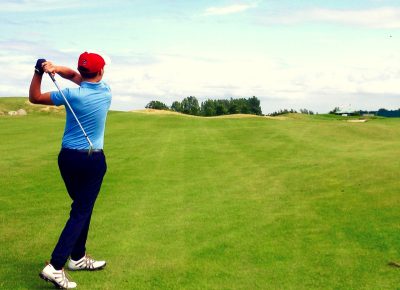
It’s inevitable – If you’re an avid golfer, you have probably experienced some type of shoulder pain. As one of the most common complaints evaluated in the world of sports medicine, shoulder pain is frustrating and uncomfortable, but gaining a comprehensive understanding of why and how the pain develops can help you move past injury.
The most common structure at the root of shoulder pain is the rotator cuff. The rotator cuff is comprised of four different muscles that originate on the shoulder blade and attach to the head of the humerus, otherwise known as the upper arm bone. The rotator cuff has two essential jobs. First, it helps keep the arm bone centered in the main shoulder joint. This is important because the main joint, the glenohumeral joint, is very shallow and unstable due to its shape. Think of it as a golf ball on a tee. Secondly, the rotator cuff allows the arm to move in different directions. Each muscle contributes to either rotating the arm in place or moving it away from the body.
The functions of the rotator cuff are important components of the golf swing. Additionally, the rotator cuff has the ever-important responsibility of transferring the body’s force from the torso to the arms and down into the club. Golf is similar to many other sports in that power truly generates from strong hip and core rotation. Since the rotator cuff is the stabilizing force in the shoulder, it transfers this generated energy down into the arms. From there, it goes through the club and to the ball (hopefully sending it exactly where you need it to!).
While many people don’t realize it, rotator cuff injuries are very common for golfers. As with any athlete, the first question is always, “Can I continue golfing?” The answer is usually yes, but it ultimately depends on the type and severity of the injury. Injuries that cause limitations in range of motion, such as full tears and degeneration of the shoulder joint can make it very difficult to go through the full motion of a golf swing, so play may be limited. Less severe injuries, such as bursitis, tendinitis and partial tears, often allow for continued play with some treatments and swing modifications along the way.
Treatments for rotator cuff injuries include physical therapy and exercises to strengthen the rotator cuff and improve range of motion. Oral medications like ibuprofen or acetaminophen help reduce the pain and can be particularly effective prior to starting a round. Additionally, corticosteroid injections can be used for more severe pain and inflammation in the shoulder. Non-surgical treatments, such as regenerative medicine, can be effective in healing underlying injury as well and do not require going under the knife.
Modifications to your golf swing can also help to reduce shoulder pain such as shortening the backswing, which can reduce stress on the rotator cuff, or slowing down club speed to maintain a more relaxed swing. Golfers suffering from rotator cuff injuries may continue to play, but not at their best. Effectively and fully treating the injury can allow golfers to return to their peak performance and reduce the risk of further or permanent injury.
Dr. Brian Sokalsky is the physician at the helm of Jersey Shore Sports Medicine in Somers Point and Lanoka Harbor, New Jersey. Dr. Brian is a board-certified family physician with special training in sports medicine and utilizes treatment options at the forefront of non-surgical healing, as well as holistic approaches, to treat his patients. Whether treating a star athlete who was injured on the field, getting a weekend warrior back into the game, or counseling a patient on medical weight loss, Dr. Brian is known to take the thoughtful, disciplined and customized approach that makes the difference. Serving as an active member of the community, Dr. Brian provides game coverage to local high school sports teams and club rugby teams. To find out more or to schedule an appointment, call (609) 904-2565 or visit jerseyshoresportsmedicine.com.
A Golfer’s Guide to Preventing Injury on the Green
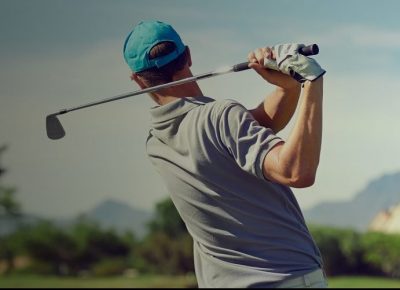
With golf season in full swing, so is the potential for injury. Although golf is considered a low-intensity sport that almost anyone can play, there are still risks involved. Contrary to popular belief, golfers are prone to experiencing injury more-so than even some of the roughest and toughest athletes out there. In fact, one study by the National Health Statistics Reports found that injuries in recreational sports such as golf occur more frequently than those in team sports like rugby and hockey at a rate of 1.8/1000 versus 1.5/1000!
With the warmth and summer sunshine upon us, everyone is grabbing their clubs and hitting the links. However, many are not taking the proper steps to prevent some of the most common ailments known to golfers such as injuries to the elbow, shoulder, hip and back. So, what can golfers do to prevent complications as they get back into the swing of things? Here are a few suggestions:
- Technique: The basis of a strong golf game is proper swing. Poor swing can put abnormal stress on the muscles in the arms, shoulders, back and hips. Over the course of a round or multiple rounds, this can lead to sprains, strains and overuse injuries like tendinitis. Correcting your form and being aware of it as you go along will help prevent these types of injuries.
- Training: Even with the best technique, your body needs to be able to handle the rigors of a round of golf. Training your muscles to perform for 18 holes is essential for keeping up – and staying healthy. For this reason, undergoing professional evaluation with tools such as the Titleist Performance Institute’s Functional Movement Screen can identify weaknesses and help develop an individualized training regimen.
- Warming Up: Studies have shown that the average golfer spends less than 10 minutes warming up, not nearly enough time to get both mentally and physically prepared for a round of golf. Getting to the course early enough allows for ample amount of time to complete a proper warmup routine, which should include light stretching to loosen up the body and time to work through your entire bag of clubs, from putter to driver. While working through the bag, envision different scenarios you might face during the round and your mind will be warmed up just as much as your body!
- Back to Basics: Not all golf injuries are musculoskeletal in nature. Be prepared for the environment you will be playing in! Dress appropriately for the weather to avoid overheating, apply plenty of sunscreen to reduce the risk of sunburn, and be sure to drink plenty of fluids in hot weather.
Following these simple tips may help prevent some of the most common injuries golfers suffer from. However, if you do experience persistent pain, don’t wait. Making an appointment with a sports medicine specialist to get an accurate diagnosis and treatment plan can help prevent chronic injury and get you back on the green faster than you might expect.
Dr. Brian Sokalsky is the physician at the helm of Jersey Shore Sports Medicine in Somers Point and Lanoka Harbor, New Jersey. Dr. Brian is a board-certified family physician with special training in sports medicine and utilizes treatment options at the forefront of non-surgical healing, as well as holistic approaches, to treat his patients. Whether treating a star athlete who was injured on the field, getting a weekend warrior back into the game, or counseling a patient on medical weight loss, Dr. Brian is known to take the thoughtful, disciplined and customized approach that makes the difference. Serving as an active member of the community, Dr. Brian provides game coverage to local high school sports teams and club rugby teams. To find out more or to schedule an appointment, call (609) 904-2565 or visit jerseyshoresportsmedicine.com.
Golfer’s Elbow and Tennis Elbow – Preventing Chronic Pain
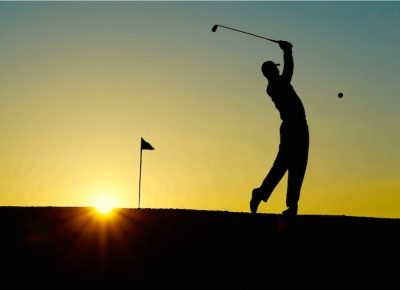
Chronic and uncomfortable elbow pain is one of the most frequent ailments that golfers face and, as many of you may know, is referred to as golfer’s elbow and tennis elbow. Golfer’s elbow is the commonly used term for medial epicondylitis, which is excessive inflammation of the common flexor tendon. This flexor tendon attaches the muscles that flex the wrist and fingers to the medial epicondyle of the humerus. In addition to golfer’s elbow, lateral epicondylitis – or tennis elbow – can develop on the other side of the elbow and can cause serious chronic pain.
Golfer’s elbow and tennis elbow are very similar injuries. The difference between them come from which tendon is affected and where the pain resides. For golfer’s elbow, pain is felt in the flexor tendon on the pinky side of the elbow. For tennis elbow, pain is felt in the extensor tendon, which causes pain on the thumb side of the elbow.
Both injuries occur due to acute damage that does not heal properly, from chronic overuse, or a combination of both. The resulting symptoms include tenderness to touch and pain with movements such as gripping (shaking hands), twisting (opening a jar) and lifting objects (sometimes as light as a coffee mug!). This type of pain is also known to radiate down the forearm to the wrist, which can cause further issues. Additionally, the elbow may experience painful swelling.
The primary treatment for these injuries is the most hated word in all of sports, REST. Both injuries stem from the tendon not properly healing, often due to overuse. Therefore, rest provides the injured structures time to heal properly and fully. Treatments that can speed the recovery process are cortisone injections, oral anti-inflammatory medications such as ibuprofen or naproxen, and physical therapy. Chronic cases that fail initial treatments respond well to regenerative treatments such as prolotherapy and platelet rich plasma injections, which do not require surgery. Finally, there are often underlying issues with swing technique that need to be corrected to prevent recurrence of the injury, which can be addressed with a professional TPI screen.
Ultimately, rest is required to allow the tendons sufficient time to heal. However, medications, physical therapy, and injections can help speed recovery. Regenerative treatments can also provide a more rapid return to the links versus surgery. And as with most other sports injuries, correcting flaws in technique can help prevent pain from coming back.
Dr. Brian Sokalsky is the physician at the helm of Jersey Shore Sports Medicine in Somers Point and Lanoka Harbor, New Jersey. Dr. Brian is a board-certified family physician with special training in sports medicine and utilizes treatment options at the forefront of non-surgical healing, as well as holistic approaches, to treat his patients. Whether treating a star athlete who was injured on the field, getting a weekend warrior back into the game, or counseling a patient on medical weight loss, Dr. Brian is known to take the thoughtful, disciplined and customized approach that makes the difference. Serving as an active member of the community, Dr. Brian provides game coverage to local high school sports teams and club rugby teams. To find out more or to schedule an appointment, call (609) 904-2565 or visit jerseyshoresportsmedicine.com.
Baseball and Softball – Keep Your Budding Athlete Healthy
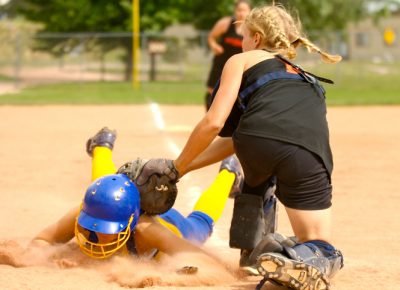
Baseball and softball put a unique set of stresses on an athlete’s body, especially young athletes that are still growing. As a result, injuries to the shoulder and elbow are very common. As we look forward to warmer weather and the start of the season, now is a great time to discuss proper training and conditioning to put our budding athletes in the best position to stay healthy!
Off-season: In the offseason, it is common for athletes to wait until the spring to begin preparing for their season. However, this can significantly increase the risk of injury. It is more effective to gradually strengthen and condition the body, especially the arms and core, rather than attempt to cram preseason training into a short period of time. December-February, typically considered the offseason, is actually the best time to begin training. A training program should focus on the following three areas to train the entire body:
- Stretching and flexibility exercises (Daily)
- Speed and agility exercises (2-3 times per week)
- Strengthening exercises (3-4 time per week)
Pre-season: Once preseason training is underway, the ultimate goal is to fully prepare the body and arm for the daily practices and competitions ahead. Gradual increases in duration and intensity of throwing should be followed during this time. A daily warm-up and flexibility routine for the whole body, with additional focus on the arm and shoulder girdle, should be instituted. Alternating between the upper body, shoulder girdle and arm, and core and lower body will ensure that the entire body receives proper conditioning. These workouts should not be done before or after games or heavy practices.
In-season: Once the season has arrived, the main focus is to avoid injury and manage the daily aches and pains that are unique to baseball and softball players. The daily warm-up and stretching routine should be continued, with additional stretching and ice treatments after practices and games. (See our ‘Hot Treatment Vs. Cold Treatment’ Blog Post for proper icing instructions). Pitch counts are also very important to follow in all age groups up through high school, for both baseball and softball. Close attention must be paid to players competing on multiple teams whose seasons overlap as overuse injuries are more common for those playing on multiple teams. For more information about pitch counts, visit the American Sports Medicine Institute’s website and check out these Softball Injury Prevention guidelines.
Post-season: The trend over the last decade in many sports is for athletes, particularly kids, to specialize in one sport and play it year-round. However, studies have shown that sport specialization dramatically increases the risk of overuse injuries. With this being said, all throwing athletes should take at least 2-3 months off from throwing every year. During this time, it is suggested to transition back into the offseason conditioning program. Here at Jersey Shore Sports Medicine, we suggest that athletes, especially our younger players, be encouraged to participate in other sports in order to develop a more well-rounded set of abilities and reduce the risk of overuse injuries.
If you would like more information about our sports medicine services or have questions about training, please call our office at 609-904-2565 to make an appointment. As always, feel free to join the conversation with us on our Facebook and Twitter pages!
Are PRP Injections right for me?
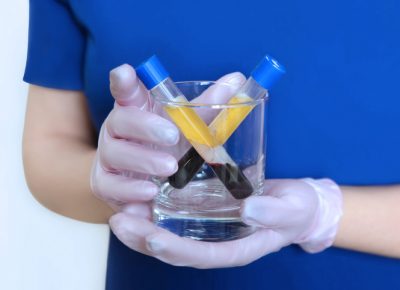
At Jersey Shore Sports Medicine, Platelet Rich Plasma (PRP) Injections are offered to treat chronic pain, which many individuals deal with on a daily basis. Whether pain originates from their job, exercise routine, strains, sprains, tendonitis or anything in between, it is certain that no one enjoys living with ongoing discomfort. Traditionally, these injuries are treated with oral medications such as ibuprofen or naproxen or physical therapy and corticosteroid injections. However, these types of treatments do not always completely resolve the pain. At this point, it is common for patients to be told that their only remaining option is surgery, which may not be the best option for everyone as it carries a number of significant risks and extended recovery time.
Enter PRP Injections, a treatment developed to help the body regenerate healthy tissue to heal chronic injuries, surgery-free. PRP has been around for quite some time, but became better known in 2006 when Hines Ward of the Pittsburgh Steelers chose PRP Injections to help heal a knee injury, later being named Super Bowl MVP for his outstanding efforts. Since then, it has moved into the mainstream as other well-known athletes, such as Kobe Bryant, have travelled to Germany to have a similar treatment performed.
So, what are PRP Injections exactly?
PRP is a procedure in which the patient’s blood is drawn and spun down in a centrifuge, concentrating the platelets and creating plasma that is rich with platelets. This platelet rich plasma is then injected into and around the affected area. Platelets have granules of growth factors within their structure, which the body utilizes as essential building blocks in healing. By injecting platelet rich plasma into the damaged area, the body is tricked into believing that the chronic injury is new and a fresh wave of healing begins.
Why would I choose PRP Injections over another treatment?
Benefits of PRP Injections include no side effects to the treatment; there is no increased risk of infection compared to other injections since we are using the patient’s own blood; there is minimal down time for recovery after the procedure, so there is no concern for extended time out of work; and athletes, dedicated exercisers and gym lovers can stay active during the healing process.
Are PRP Injections right for me?
Any injury that includes chronic damage to a tendon or ligament is potentially a candidate for this treatment. At Jersey Shore Sports Medicine, we have successfully treated partial rotator cuff tears, tennis and golfer’s elbow, chronic trochanteric bursitis, chronic MCL sprains in the knee, Achilles tendinitis and plantar fasciitis with Platelet Rich Plasma Injections.
If you think you are a candidate, or would like more information about PRP Injections, please call our office at 609-904-2565 to make an appointment. As always, feel free to join the conversation with us on our Facebook and Twitter pages!
Concussion Awareness
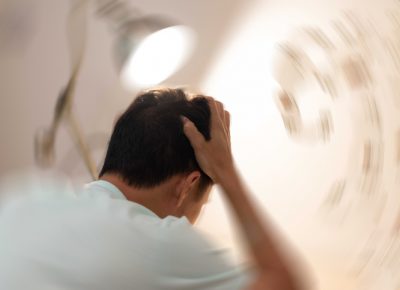
When you hear the term ‘concussion,’ what do you think of? With talk of head injuries dominating the world of professional sports, especially in football, you may imagine a cringe-worthy collision between powerful opposing forces. Recent research has exposed the potentially detrimental effects of head injuries, even with the supposedly protective headgear worn by football players.
Considering the fact that professional athletes wearing specifically designed headgear still suffer from head injuries, it is particularly important to assess the risks that young athletes face. Any athlete can suffer from a concussion, and because we may not associate concussions with sports such as baseball or cheerleading, we could miss the warning signs of these devastating head injuries.
The people on the front lines of youth, high school, or collegiate sports—coaches, trainers, parents, and school officials—should be extra vigilant. You’re usually the first one to evaluate an athlete, regardless of age, who gets hit in the head during practice or takes a hard fall during a game. Therefore, it is important to remember a few universal key points in the event of a head injury.
- Know the signs: A concussion is an injury to the brain caused by trauma directly to the head or body that results in the brain being shaken or jolted inside the skull. The initial diagnosis of a concussion is made by the presence of signs and symptoms. There are over twenty signs and symptoms, but some of the most common ones that initially present are headache, dizziness, fogginess and nausea. If any of these symptoms are present, the athlete should be immediately removed from the game or practice even if the athlete claims to feel okay. It is common for an athlete’s drive to continue that may overpower what is really best, which is playing it safe and sitting out.
- What’s next? Concussions can cause serious difficulties and limitations for student athletes. They may have difficulty focusing in class, working on computers for extended periods of time, difficulty taking notes from the board, and even reading a textbook. Steps should be taken to remove them from aggravating tasks until evaluation by their pediatrician or family doctor, or a concussion specialist. Once evaluated, proper accommodations such as reduced workloads and extra time to complete assignments can be arranged in order for the athlete to recover fully and properly.
- Additional rules of thumb: Accommodations don’t end once the school day is over. The same difficulties that a student has in school also apply to out-of-school activities. Things such as watching TV, playing video games, and extended time on a cell phone can trigger severe symptoms and harm the healing process. Parents must supervise their children and remove aggravating activities that may slow the healing process, specifically technology use as well as vigorous physical activity. Close follow-ups with your doctor and communication between parents, coaches and school officials will ensure that the correct measures are taken for your child to heal properly.
Concussions are a complex injury to diagnose and treat and should always be taken seriously. Fortunately, due to the increased scrutiny in sports and amplified research, our understanding continues to grow. Parents, coaches, trainers, school nurses, etc. must be aware of the basic signs of concussions and how to properly start the evaluation and treatment process.
Jersey Shore Sports Medicine specializes in treating sports-related concussions in athletes ages eleven and up. If you have any questions, or feel you have an athlete that needs to be evaluated, please contact us at 609-904-2565. You can also follow us on Facebook and Twitter to continue the conversation about concussion awareness.
